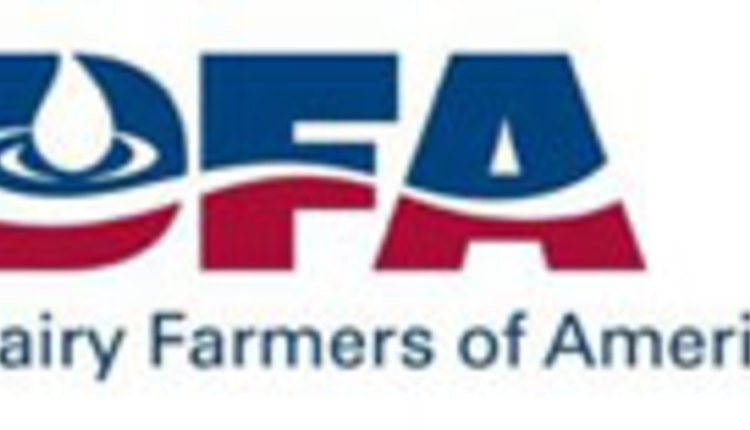The information below has been supplied by dairy marketers and other industry organizations. It has not been edited, verified or endorsed by Hoard’s Dairyman.
 Milk is Exhibit A of the tried-and-true in action. The Pasteurized Milk Ordinance (PMO) regulating all Grade “A” milk is more than a century old, making sure that a product that caused 19th century panics has been a trusted source of premium nutrition well into the 21st. The PMO is pretty mundane: Its exhaustive rules and regulations make a great cure … for insomnia. And that’s the point. By outlining in extensive prescribed detail how milk must be handled, tested, and then mandating those procedures, the PMO goes to great lengths to ensure the safety of milk – so you don’t have to worry about it. Here’s a taste of the required testing milk must go through, from farm, to processing plant, to store shelf. And these are the minimum requirements – many dairy farmers and milk processors go above and beyond, to protect the health of consumers and their own success in the marketplace. According to the PMO: Within two hours of milking, all milk must be cooled to 45 degrees Fahrenheit (7 degrees Celsius) and refrigerated properly until a milk truck driver arrives, in a vehicle that’s highly regulated to ensure proper cleanliness. When the driver arrives at a farm to pick up milk, the driver takes or picks up samples from each farm’s bulk milk tank (and/or silo) and holds those in a cooler for further follow up if any anomalies are identified in subsequent testing. When the tanker arrives at the processing location, each tanker is tested for animal drug residues as required by the Pasteurized Milk Ordinance (PMO). And if the results find antibiotics (specifically, beta lactams), the milk is rejected and removed from the animal and human food supply. b. Tankers are also tested for somatic cells to assess quality and tested for added water, which is illegal, and would render the milk adulterated. In addition, the milk’s temperature is checked to ensure it’s been stored properly and inspected for any adverse physical signs, such as off color or odor. Once the milk arrives at a processing plant, the PMO requires every milk truck to be tested for beta lactams before it enters – (If this is starting to seem obsessive, note that it brings results: In 2024, only 1 out of every 17,083 tankers, less than six thousandths of one percent, tested positive for a drug residue, the lowest ever.) Once all those hurdles have been surmounted, milk enters the plant and receives the gold standard treatment: Pasteurization. For more than 100 years, pasteurization has been keeping consumers safe from threats that ranged from tuberculosis (second only to cancer as a cause of death in 1925) to bird flu, which pasteurization renders harmless in milk, according to repeated tests taken last year when the virus was identified in dairy cattle. Here's how pasteurization works. Under HTST (High-Temperature Short-Time) pasteurization, milk is heated to a specific temperature, typically at least161°F (71.5°C), though many plants go even higher. The heated milk is held at the specific temperature for a set time — typically no less than15 seconds for HTST. This allows the heat to effectively kill harmful bacteria. Alternative methods, like vat pasteurization, use lower temperatures (145°F or 63°C), but for longer periods (30 minutes). In general, the higher the temperature, the longer the milk’s shelf life. Ultra-pasteurized milk, for example, is heated to temperatures around 280°F (140°C) for a short time, resulting in longer shelf life. And Ultra-High Temperature, which is processed and packaged in a commercially sterile environment, may go even higher (e.g., 285°F or 140°C), resulting in shelf-stable milk. In every case, the combination of temperature and time allows the heat to effectively kill harmful viruses and bacteria. And keep milk safe. After pasteurization, the milk is then rapidly cooled down, usually to around 40°F. This prevents further bacterial growth and maintains the milk's quality. Pasteurized milk also undergoes its own tests — pasteurized milk goes through a phosphatase test to confirm efficacy. What’s a phosphatase test, you ask? The phosphatase test, specifically the alkaline phosphatase (ALP) test, is used to determine if milk has been properly pasteurized. ALP is an enzyme naturally present in raw milk but is inactivated by heat during pasteurization. ALP activity in milk indicates insufficient pasteurization or contamination with raw milk after pasteurization. From there, the milk is packaged and sent to the store. If all this seems overly detailed, technical and mind-numbingly repetitive, well, that’s the point. Milk is a product of proven safeguards and processes, backed by state and federal regulations and an industry that doesn’t want to be associated with food scares and illness outbreaks. Do outbreaks still occur? Unfortunately, yes. Nothing in life is 100 percent foolproof, and fools, and mishaps, will always exist. But given the billions of pounds of milk produced each year, such outbreaks are exceedingly rare. And when they do happen, regulators and the dairy industry learn and do better. Dairy is defined by many things. Quality, nutrition, nourishment across the globe. But safety is fundamental to all of these. That’s been true in the past. It’s true today. And it will be tomorrow, thanks to the farmers, testers and workers from farm to fork, working to make it so. | |||||
| The National Milk Producers Federation, based in Arlington, VA, develops and carries out policies that advance dairy producers and the cooperatives they own. NMPF’s member cooperatives produce more than two-thirds of U.S. milk, making NMPF dairy’s voice on Capitol Hill and with government agencies. For more, visit |


